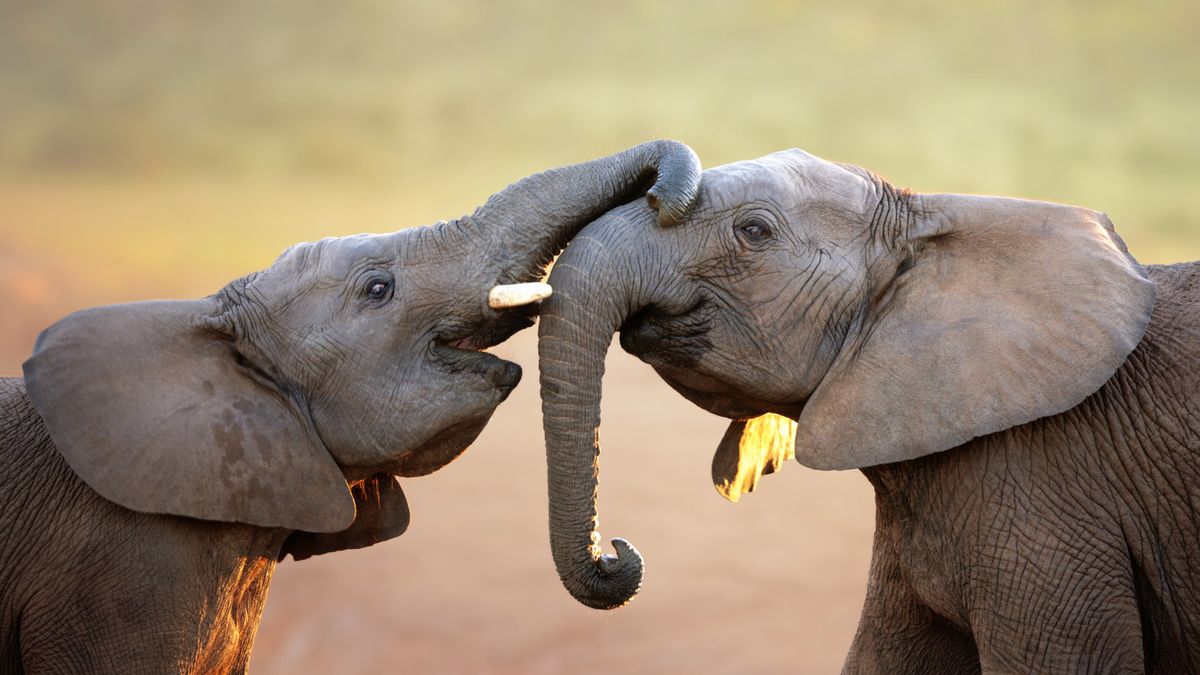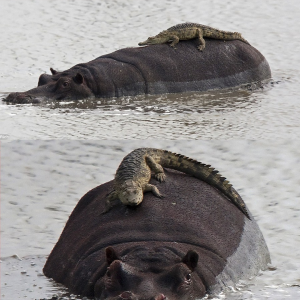Elephants use ear flaps, rumbles, trunk reaches and other forms of communication to greet peers, new research suggests.

Elephants use a variety of gestures, sounds and visual cues to communicate, new research suggests.
When elephants reunite with friends, they greet each other with ear flaps, rumbles and other deliberate sounds and gestures, new research shows.
The study, which was published May 9 in the journal Communications Biology, suggests that elephants are communicating intentionally and that they tailor their greeting depending on what other elephants are doing. For example, when another elephant was already paying attention, elephants were more likely to use visual gestures; otherwise, they were more likely to use touch.
“For me, it was really exciting to finally do this, to finally understand how they use their bodies to communicate,” study lead author Vesta Eleuteri, a graduate student at the University of Vienna, told Live Science. “It’s just mind blowing that they do rely on it so much, but it’s so overlooked.”
Scientists already knew that elephants communicate from up to miles away using deep rumbles that are too low for humans to hear but that their species’ massive ears pick up with ease. And their long trunks come with an excellent sense of smell: Elephants can sniff out age, kinship and even social groups — among both elephants and people. Compared with humans, though, elephants’ eyesight is relatively poor.

Previous elephant communication research has tended to focus on sound and smell separately, Eleuteri said, rather than on how those and other senses might work together.
Eleuteri and her team took a different approach, counting visual gestures — such as ear flapping and trunk reaching — along with vocalizations, touches and scent-related behaviors. They tracked which gestures and sounds occurred together, noting that low rumble noises often accompanied ear flapping — this combination was the most common greeting they documented. The recurring combination suggested the elephants wanted to communicate, Eleuteri said. The elephants also usually looked at each other before gesturing, further reinforcing that idea.
“This paper is unique in how seriously it tackles the concept of multi-modal communication,” meaning communication that involves multiple senses at once, said Robbie Ball, who studies comparative cognition at Hunter College and the Graduate Center at the City University of New York and was not involved in the study.
“Just like I might wave my hand and yell ‘Hey!’ at my friend across the street, elephants appear to also combine appropriate communications signals for when they are greeting their friends,” Ball told Live Science.
For years, researchers had documented a cacophony of greeting behaviors when groups of elephants came together. It just wasn’t clear which behaviors, if any, were intended as communication and which were unthinking. To answer that question, the researchers in the new study worked with a group of nine semi-wild elephants in Zimbabwe, separating them for 10 minutes at a time and then bringing them back together in order to observe their greetings.
Elephants only tend to greet other elephants that they know and like, so an important first step was to figure out which elephants in the group were already close. Elephant caretakers already had some sense of the elephants’ social dynamics. To quantify them, they used a proxy for elephant friendship: the “nearest neighbor index.” Twice a month, elephant carers checked to see which elephants were standing closest to each other. They eventually chose to study six elephants that were closely bonded.

The study emphasizes that elephants live in complex social worlds, with family groups separating, coming together and keeping track of complex relationships over time.
“They have long lives like humans. They can live up to 70 years and they have a similar trajectory,” Eleuteri said.
She suggested that having many social partners could push animals to develop complex communication.





